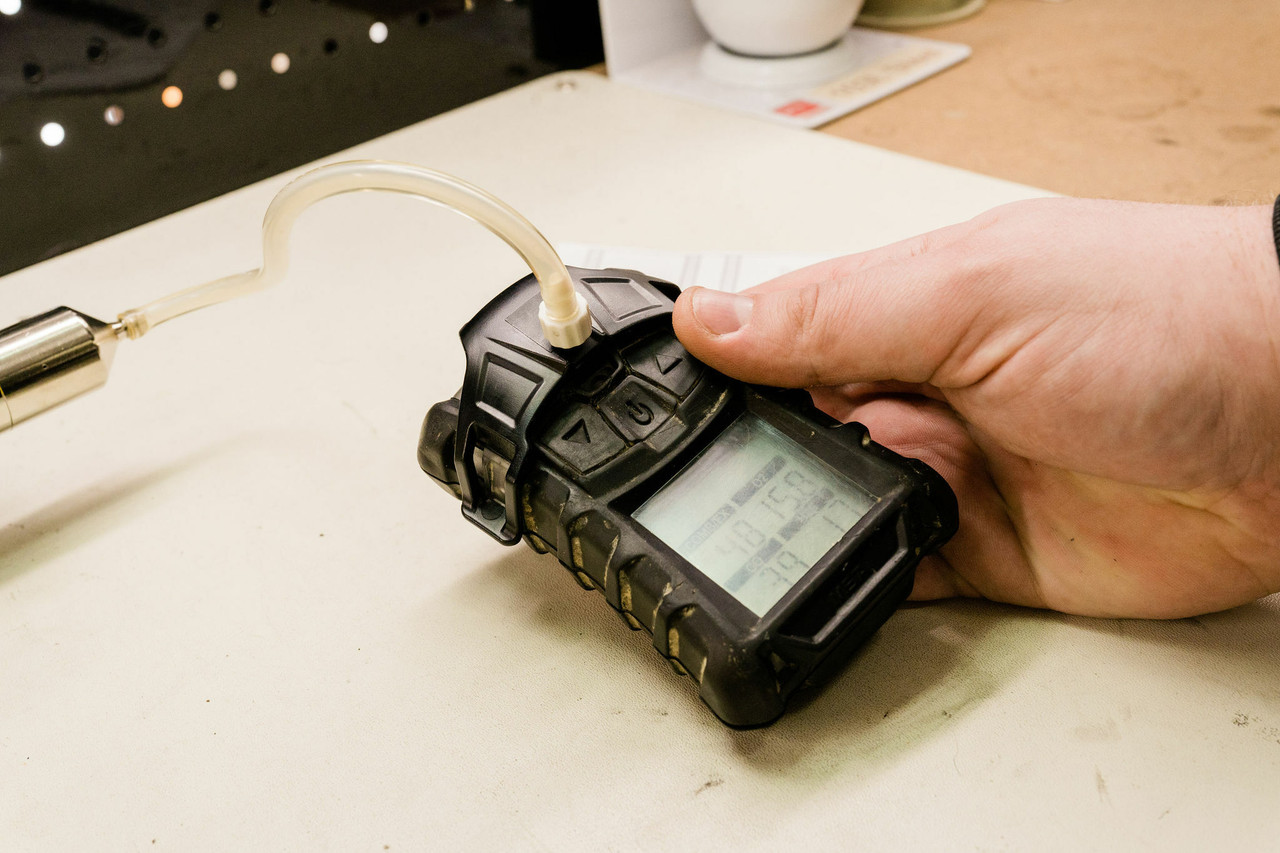4-Gas Detectors
4 Gas monitors detectors are used to protect workers from potentially hazardous environments in various industrial settings. Portable instruments are designed to monitor the presence of four key gases (but may occasionally include other gases) that pose significant risks to human health: oxygen (O2), flammable gases (LEL), carbon monoxide (CO), and hydrogen sulfide (H2S).
Commonly Detected Gases:
- Oxygen (O2): Measures the level of oxygen in the air, ensuring it remains within a safe range (usually around 20.9%). Too much or too little oxygen can be harmful.
- Flammable Gases (LEL - Lower Explosive Limit): Detects the presence of combustible gases or vapors in the atmosphere, preventing potential explosions or fires.
- Carbon Monoxide (CO): Monitors CO levels, which can be deadly in high concentrations, often generated by incomplete combustion or industrial processes.
- Hydrogen Sulfide (H2S): Identifies the presence of H2S, a toxic gas with a pungent odor, which can cause severe health issues and even be lethal in high concentrations.
Common Uses: 4-Gas detectors are essential in various industries, including:
- Oil and Gas: Monitoring for explosive gases and H2S in drilling, refineries, and petrochemical facilities.
- Construction: Ensuring safe oxygen levels and detecting potential hazards in confined spaces.
- Mining: Detecting dangerous gases in underground mines.
- Manufacturing: Preventing CO exposure in industrial processes and monitoring LEL levels.
- Firefighting: Protecting first responders by detecting hazardous gases during firefighting operations.
- Wastewater Treatment: Ensuring the safety of workers in potentially toxic environments.
- Agriculture: Detecting gases in silos, manure pits, or chemical storage areas.
Maintenance and Calibration: To keep 4-Gas detectors accurate and reliable, regular maintenance and calibration are crucial:
- Bump Test: Perform daily bump tests using a known gas concentration to verify the detector's response.
- Calibration: Periodically calibrate the device using certified calibration gases to ensure accurate readings. We recommend daily bump checks and monthly calibrations, but each manufacturer's recommendations may vary.
- Sensor Replacement: Replace sensors as recommended by the manufacturer or when the device displays errors or fails bump tests/calibrations
- Battery Check: Keep the battery charged and replace it as needed to ensure continuous operation.
- Sensor Filter Cleaning: Clean sensor filters to maintain sensitivity and accuracy.
By understanding the operation and maintenance of 4-Gas detectors, you can more effectively mitigate the risks associated with hazardous gases in the workplace. For more information on calibration, part numbers, or technical assistance, please check out our Portable Gas Monitor Information section.

